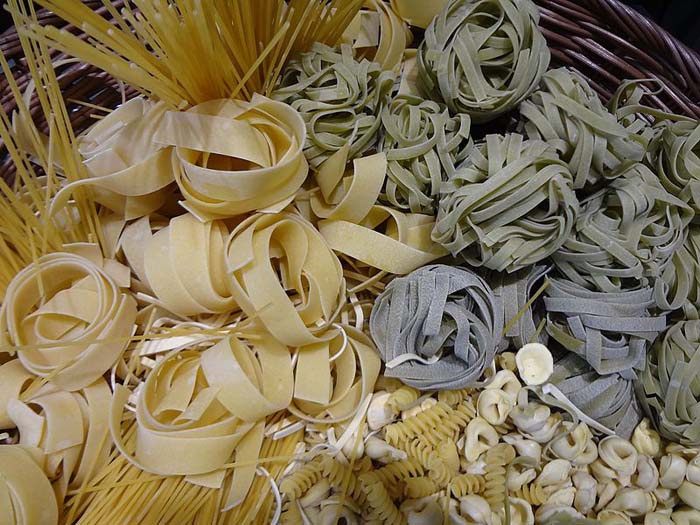
Who took this photo of my “used” dropper rig collection? No one, it’s “Amazing Pasta” by photographer David Adam Kess. A commons image.
Morris’s how-to response is like his writing. Complete, long, and in the conversational style, but spot-on
By Skip Clement
[dropcap]R[/dropcap]eading this morning’s wires, knowing which tend to have interesting information first, starts with our postings, then over to Marshall Cutchins’ Midcurrent, and neither let me down.
With a keen interest New Zealand, a place I called home for five months following my retirement in the 1990s, and as a disgraced [inept] caster of dual fly rigs – especially with one weighted, I saw Skip Morris’ response to a Tongariro River, Taupo, New Zealand, angler asking: “What is the best way to cast a large dry fly with a size-16 tungsten dropper attached by a meter [3.28-feet] and sometimes more of tippet? Is there a better way to set up the dry fly dropper?”
Here’s what I, and our editors took from how to cast a potential spaghetti rig
1. Morris calls it VIGILANCE, and he is right-on about that. There is no scientific evidence to support this, but once you tie a second fly on drop rig it automatically has a heartbeat, and alive its life function is to snarl, unwitnessed, so, do not take your eyes off the rig, ever.
2. Patience
3. “The stroke must be smooth—a slow start building gradually to a quick rod-tip and, consequently, a quick line speed. Any inconsistencies, jerks or stalls, and the line starts bouncing ….”
4. Cast with an open loop in the line by keeping the rod’s tip travelling a little extra at the end of the back and the forward casts—that widens the loop in the line to separate its sides, the side that’s the line from the side that’s leader, tippet, and flies.
5. READ THE ORIGINAL TEXT – see link below.
6. FISH ON! Opps, no, there is not, and the rig comes flying back and tangles.

